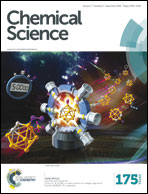Donor–π–donor type hole transporting materials: marked π-bridge effects on optoelectronic properties, solid-state structure, and perovskite solar cell efficiency†
Abstract
Donor–π-bridge–donor type oligomers (D–π–D) have been studied intensively as active materials for organic optoelectronic devices. In this study, we introduce three new D–π–D type organic semiconductors incorporating thiophene or thienothiophene with two electron-rich TPA units, which can be easily synthesized from commercially available materials. A thorough comparison of their optoelectronic and structural properties was conducted, revealing the strong influence of the extent of longitudinal π-bridge conjugation on both the solid structure of the organic semiconductive materials and their photovoltaic performance when applied as hole transporting materials (HTM) in perovskite solar cells. Single-crystal measurements and time-resolved photoluminescence (TRPL) studies indicate that these coplanar donor–π–donor type HTMs could be promising alternatives to state-of-the-art spiro-OMeTAD, due to the multiple intermolecular short contacts as charge transporting channels and efficient charge extraction properties from the perovskite layer. The optimized devices with PEH-9 exhibited an impressive PCE of 16.9% under standard global AM 1.5 illumination with minimized hysteretic behaviour, which is comparable to that of devices using spiro-OMeTAD under similar conditions. Ambient stability after 400 h revealed that 93% of the energy conversion efficiency was retained for PEH-9, indicating that the devices had good long-term stability.

- This article is part of the themed collections: 2020 Journal of Materials Chemistry Lectureship Winner: Giulia Grancini, Global Energy Challenges: Solar Energy and Global Energy Challenges: Energy Applications


 Please wait while we load your content...
Please wait while we load your content...